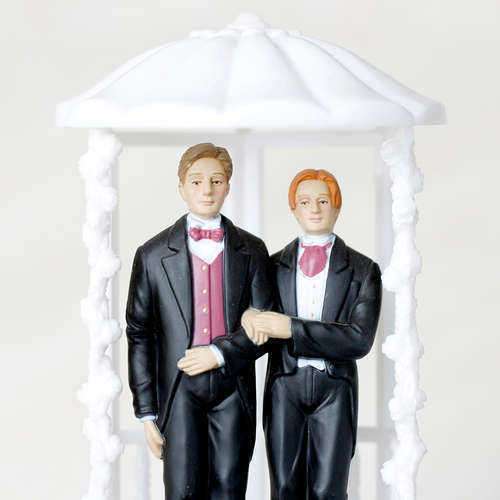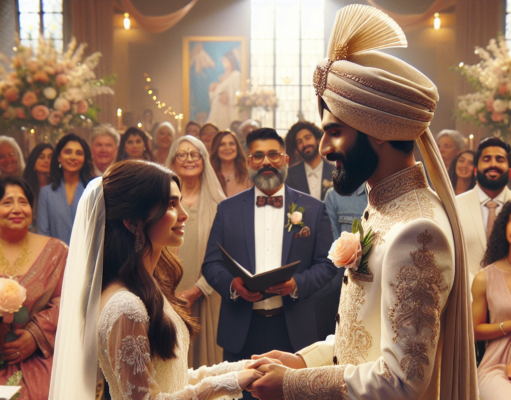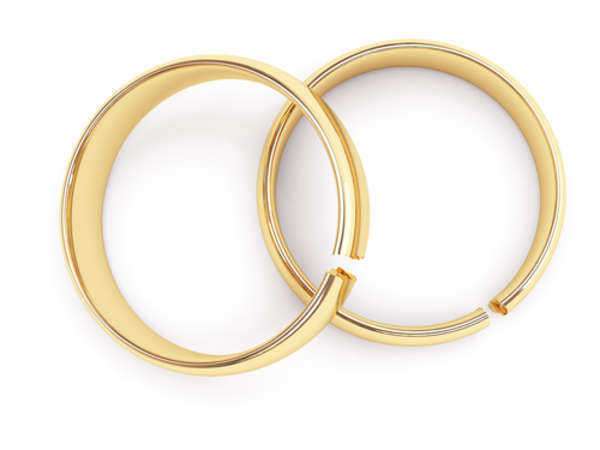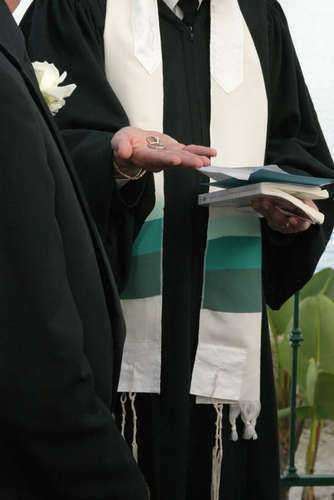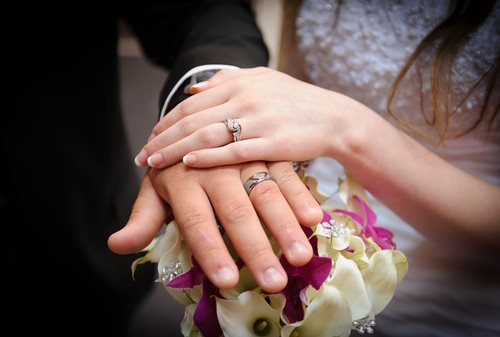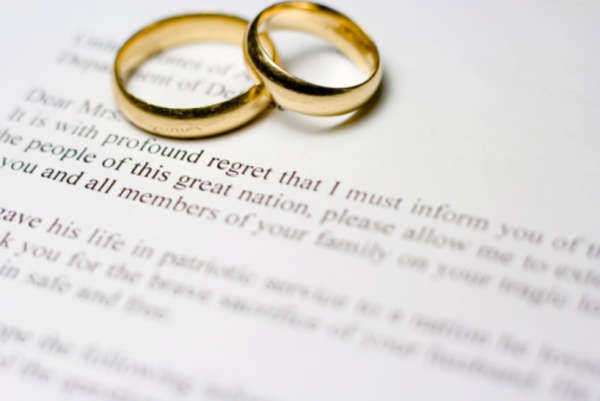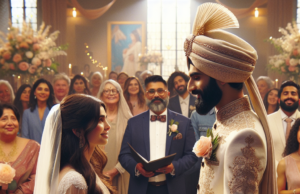
Introduction
The Federal Defense of Marriage Act (DOMA) was signed into law by President Bill Clinton on September 21, 1996. The law defined marriage as between one man and one woman and denied federal recognition of same-sex marriages. DOMA prohibited same-sex couples from receiving federal benefits and protections, such as Social Security, tax benefits, and immigration rights. At the time, it was seen as a major victory for opponents of same-sex marriage. However, since its signing, DOMA has been the subject of much controversy and legal challenges, which eventually led to its overturning in 2013.
What is the Defense of Marriage Act?
To understand the Defense of Marriage Act, we must first understand what it means to define marriage. When two people get married, they enter into a legally recognized relationship. In the United States, marriage is regulated at the state level. This means that each state sets its own rules for who can get married and what the requirements are. For example, some states require a waiting period after obtaining a marriage license, while others do not. Some states allow same-sex marriages, while others do not.
The Defense of Marriage Act was a federal law that sought to define marriage at the national level. The law defined marriage as being between one man and one woman and prohibited the federal government from recognizing same-sex marriages. This means that same-sex couples could not receive federal benefits and protections, even if they were allowed to get married in their home state. For example, same-sex couples could not file joint tax returns or receive Social Security benefits if one partner died.
Why was DOMA passed?
DOMA was passed in response to several court cases in Hawaii that challenged the state’s ban on same-sex marriage. During this time, there was concern among some lawmakers that if Hawaii legalized same-sex marriage, other states would be forced to recognize those marriages. Additionally, opponents of same-sex marriage argued that it was against traditional family values and that the government should not condone or recognize such relationships.
Who Supported DOMA?
DOMA was supported by many conservative and religious groups, who argued that it was necessary to protect traditional marriage and the American family. Some politicians, such as former Senator Rick Santorum, also supported the law, saying that it was necessary to prevent a slippery slope of moral decay in society.
Who Opposed DOMA?
Opposition to the Defense of Marriage Act came from many different groups, including civil rights organizations, LGBTQ+ advocacy groups, and some politicians. Many opponents argued that DOMA was unconstitutional and discriminatory, as it denied equal rights and protections to same-sex couples. Others argued that the federal government had no right to interfere in state-level decisions about marriage.
How did DOMA affect same-sex couples?
DOMA had a significant impact on the lives of same-sex couples, particularly those who were legally married in their own state. Without federal recognition of their marriages, these couples were denied many of the benefits and protections afforded to opposite-sex couples. This included things like:
– Filing joint tax returns
– Receiving Social Security benefits from a deceased partner
– Obtaining green cards for foreign-born spouses
– Receiving spousal health care benefits
Because of DOMA, same-sex couples were often left in legal and financial limbo. In some cases, they were forced to pay extra taxes or jump through additional legal hoops to secure the same rights as opposite-sex couples.
The Legal Challenges to DOMA
Almost immediately after DOMA was passed, legal challenges were mounted against it. The first major challenge came in 2001, when a man named Bobbi Bernstein sued the federal government after being denied Social Security survivor benefits after her partner, who she had legally married in Vermont, died. Bernstein argued that DOMA violated the equal protection clause of the Constitution and that the federal government had no constitutional authority to define marriage.
In 2004, the Massachusetts Supreme Judicial Court ruled that the state’s ban on same-sex marriage was unconstitutional. This ruling effectively legalized same-sex marriage in Massachusetts, making it the first state in the U.S. to do so. The decision prompted the federal government to issue a statement that it would not recognize same-sex marriages, even if they were legal in certain states.
In 2010, a district court in Massachusetts ruled that DOMA was unconstitutional. The decision was appealed, and in 2011, the First Circuit Court of Appeals upheld the lower court’s decision. This marked the first time that a federal court had found DOMA to be unconstitutional.
In 2013, the Supreme Court heard two major cases related to same-sex marriage. The first, United States v. Windsor, involved a woman named Edith Windsor, who was denied federal estate tax benefits after her wife died. Windsor argued that DOMA violated her constitutional rights by denying her the same benefits and protections as opposite-sex couples.
The second case, Hollingsworth v. Perry, involved California’s ban on same-sex marriage. The Supreme Court ultimately ruled that the defenders of Proposition 8 did not have standing to appeal the case, effectively legalizing same-sex marriage in California.
In the Windsor case, the Supreme Court found that DOMA was unconstitutional because it violated the principle of equal protection under the law. In a landmark decision, the Court declared that “The federal statute is invalid, for no legitimate purpose overcomes the purpose and effect to disparage and to injure those whom the State, by its marriage laws, sought to protect in personhood and dignity.”
After the Supreme Court’s ruling, the federal government began recognizing same-sex marriages that were legally performed in individual states. This effectively overturned DOMA and paved the way for the eventual legalization of same-sex marriage nationwide.
Conclusion
The Defense of Marriage Act was a federal law that sought to define marriage as being between one man and one woman. The law denied federal recognition of same-sex marriages, meaning that same-sex couples could not receive federal benefits and protections, even if they were legally married in their own state. After the law was passed, numerous legal challenges were mounted against it, and in 2013, the Supreme Court declared it to be unconstitutional. The Court’s decision effectively overturned DOMA and paved the way for the eventual legalization of same-sex marriage nationwide.
What To Know About the Federal Defense of Marriage Act (DOMA)
The Defense of Marriage Act, sometimes shortened to DOMA, is a federal law in the United States which was signed into the legislature by former President Bill Clinton on September 21, 1996. In the Federal Defense of Marriage Act 1996, the federal government explicitly defines marriage to be a legal union between a man and a woman.
Under the Federal Defense of Marriage Act 1996, no American state or political subdivision within the United States is required to recognize a marriage within a same-sex relationship that was set in another state. The Federal Defense of Marriage Act 1996 passed both the House and Senate with a large majority. Section 3 of the Defense of Marriage act prevents the federal government from acknowledging the legal validity of same-sex marriages. However, this section has been found to be unconstitutional in a California bankruptcy case, two Massachusetts cases, and by President Obama’s administration. These rulings are still under appeal.
Social Background of the Federal Defense of Marriage Act 1996
When the Federal Defense of Marriage Act 1996 was first passed, it was thought that Hawaii and potentially other states would be quick to legalize same-sex marriage, either by judicial interpretation or legislation of either the federal or state constitution. Challengers of such recognition worried that other states would then be forced to recognize the validity of these marriages under the authority of the Full Faith & Credit Clause found in the United States Constitution.
Section 2 of the Federal Defense of Marriage Act 1996
According to the Report from the House of Representatives on the Federal Defense of Marriage Act 1996, Section 2, which are the Powers reserved for the states, of the act was written with the intention of protecting the right of the individual States to create their own public policies in terms of the legal recognition of gay marriages
and same sex unions without having any federal constitutional implications that
could possibly modify the recognition by one State of the right for same sex couples
to obtain marriage licenses.
This section explicitly provides that no individual State will be required to agree to full faith and to recognize to a marriage license which was issued by another State if it is regarding to a relationship between homosexual couples. This basically means that the law upholds the power of each individual state to make the state’s own decision regarding whether the state will reject or accept any same-sex marriages that are created in other states or jurisdictions.
Section 3 of the Federal Defense of Marriage Act 1996
Section 3, or the definition of marriage, of the law is the portion of the act that legally defines a marriage in terms of federal uses as the union explicitly of a woman and a man. However, this portion of the act was deemed unconstitutional in July 2010 by a federal district court judge. This decision was then appealed three months later. On February 23, 2011, the Attorney General Eric Holder publicly announced that the United States Justice Department would no longer act as the legal defense of the Section 3 of the Federal Defense Marriage Act at the instruction of President Barack Obama, who had decided that Section 3 of the Federal Defense Marriage act was
unconstitutional.
Despite this, Congress may possibly choose to defend the law in a courtroom instead of through the administration. March 4, 2011, John Boehner (the Speaker of the House) announced that he was taking action in order to defend Section 3 of the Federal Defense of Marriage Act 1996 on behalf of the United States Department of Justice. Furthermore, the administration wishes to enforce the Federal Defense of Marriage Act 1996 until and unless Congress legally repeals Section 3 of the act or the judicial branch places a definitive verdict against the constitutionality of the section.
Enactment of the Federal Defense of Marriage Act 1996
In the 1993 Hawaiian Supreme Court case Baehr v. Miike, the court ruled that the state of Hawaii must show a strong and compelling interest behind prohibiting same-sex marriage within the state. This legal action prompted great concern among various opponents of same-sex marriage regarding the possibility that same-sex marriage could become legal in Hawaii resulting in other states having to recognize those marriages as valid. The enactment of the Federal Defense of Marriage Act 1996 was done in order to free individual states from any sort of obligation in recognizing marriages of homosexual couples in other states.
The Defense of Marriage Act 1996 was authored by Georgia Representative Bob Barr, who was at the time a Republican representative. He then introduced the bill to the House on May 7, 1996. The Congressional sponsors of the bill stated that the bill worked to amend the United States Code in order to explicitly state what has been implied and understood for over 200 years under federal law. This fact was that a marriage is only the legal union of a woman and man as wife and husband, and that a spouse is a member of the opposite sex.
The bill’s legislative history declares authority to endorse the law under Article IV Section 1 of the Constitution, which gives Congress the power to define the full effect of the credit and full faith each state must give to other states’ acts. Supporters made clear their intent to regularize heterosexual marriage specifically on as federal level, while allowing other states to decide individually whether to acknowledge same-sex unions granted from other states.
The Republican Party platform in 1996 endorsed the Federal Defense of Marriage Act, making references only to Section 2 of the Act. They felt that anti-discrimination laws should not be distorted so heavily in order to cover sexual preference. Furthermore, the platform also endorsed the Federal Defense of Marriage Act and its ability to prevent states from being legally forced to recognize homosexual unions. The platform of the Democratic Party in 1996 did not mention the Defense of Marriage Act or marriage in general.
In an interview in June 1996 in The Advocate, the gay and lesbian magazine, Former President Clinton said that he was opposed to same-sex marriage as he felt that marriage was an institution reserved for the union of a woman and a man. He did not revisit or mention the stance in his autobiography written in 2004. As time progressed, former President Clinton’s personal views regarding same-sex marriage slowly shifted. In July 2009, Clinton said that he placed his support in individuals doing what they feel they want to do and that others should not stop gay marriage because of it. He also showed support for gay marriage but felt it should not be a federal question, but rather all states should be in support of it.
The bill for the Federal Defense of Marriage Act moved through Congress on a fast track and found overwhelming approval in both the House and Senate, which were both Republican-controlled. The bill passed with a vote in the Senate of 85–14 and a vote in the House of Representatives of 342–67. On September 21, 1996, the act
was signed into legislation by President Bill Clinton.
Recognition of Gay Marriage In Response of the Defense of Marriage Act
Since the enactment of Federal Defense of Marriage Act 1996, many states have allotted licenses for same-sex marriages. These states include the District of Columbia, New York, Massachusetts, New Hampshire, California, Connecticut, Iowa, and Vermont.
Maryland and New Mexico recognize the homosexual marriages set from other jurisdictions. California, Illinois, Hawaii, New Jersey, and Nevada also recognize such a marriage as a domestic partnership or civil union.
Certain states recognize civil unions in order to represent homosexual relationships, and make these relationships equivalent to marriage. Other states such as Nevada have domestic partnerships in order to grant same-sex relationships some legal status and benefits that the state normally places on married couples.
A majority of the states have very restricted recognition of marriage limited to one woman to one man. Up until April 2009, 29 states in the United States have created constitutional amendments that define marriage as the union of a woman and a man, while another 13 states have set up statutory bans, that approved a gay marriage law that was first repealed by referendum in the general elections of 2009.
Later Politics of the Federal Defense of Marriage Act 1996
The Republican Party platform in 2000 endorsed the Defense of Marriage Act in overall terms but presented a concern about potential judicial action. The party continued to hold the stance that federal law should not force other states to recognize other arrangements beside one woman and one man as marriages. The same year, the Democratic Party platform did not mention the Defense of Marriage Act or marriage within this context.
In 2008, Congressman Barr publicly apologized for sponsoring the Defense of Marriage Act and stated that the law should be repealed on the basis that the act violated the principles of federalism.
Full Text of the Federal Defense of Marriage Act 1996
[DOCID: f:publ199.104]
[[Page 110 STAT. 2419]]
Public Law 104-199
104th Congress
An Act
To define and protect the institution of marriage.
Be it enacted by the Senate and House of Representatives of the
United States of America in Congress assembled,
SECTION 1. SHORT TITLE.
This Act may be cited as the “Defense of Marriage Act”.
SEC. 2. POWERS RESERVED TO THE STATES.
(a) In General.–Chapter 115 of title 28, United States Code, is amended by adding after section 1738B the following:
“Sec. 1738C. Certain acts, records, and proceedings and the effect thereof
“No State, territory, or possession of the United States, or Indian tribe, shall be required to give effect to any public act, record, or judicial proceeding of any other State, territory, possession, or tribe respecting a relationship between persons of the same sex that is treated as a marriage under the laws of such other State,
territory, possession, or tribe, or a right or claim arising from such relationship.”.
(b) Clerical Amendment.–The table of sections at the beginning of chapter 115 of title 28, United States Code, is amended by inserting after the item relating to section 1738B the following new item:
“1738C. Certain acts, records, and proceedings and the effect thereof.”.
SEC. 3. DEFINITION OF MARRIAGE.
(a) In General.–Chapter 1 of title 1, United States Code, is amended by adding at the end the following:
“Sec. 7. Definition of `marriage’ and `spouse’
“In determining the meaning of any Act of Congress, or of any ruling, regulation, or interpretation of the various administrative bureaus and agencies of the United States, the word `marriage’ means only a legal union between one man and one woman as husband and wife, and the word `spouse’ refers only to a person of the
opposite sex who is a husband or a wife.”.
[[Page 110 STAT. 2420]]
(b) Clerical Amendment.–The table of sections at the beginning of chapter 1 of title 1, United States Code, is amended by inserting after the item relating to section 6 the following new item:
“7. Definition of `marriage’ and `spouse’.”.
Approved September 21, 1996.
LEGISLATIVE HISTORY–H.R. 3396:
—————————————————————————
HOUSE REPORTS: No. 104-664 (Comm. on the Judiciary).
CONGRESSIONAL RECORD, Vol. 142 (1996):
July 11,
12, considered and passed House.
Sept. 10,
considered and passed Senate.
